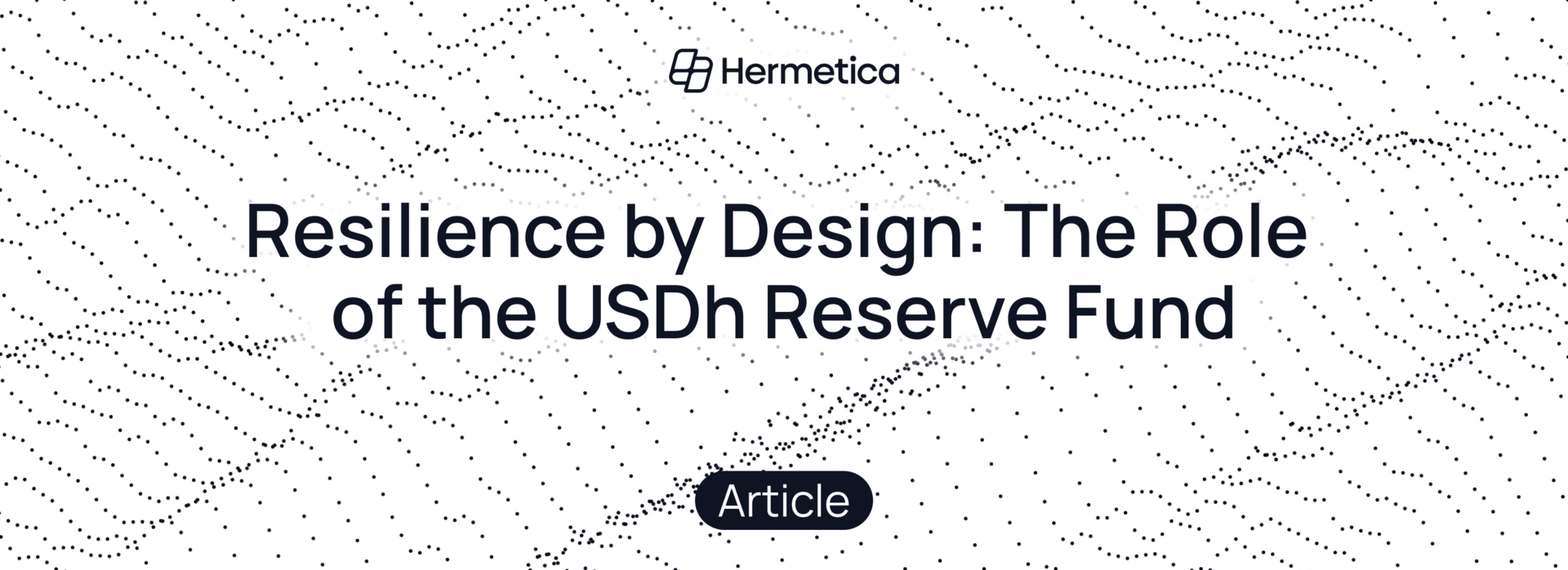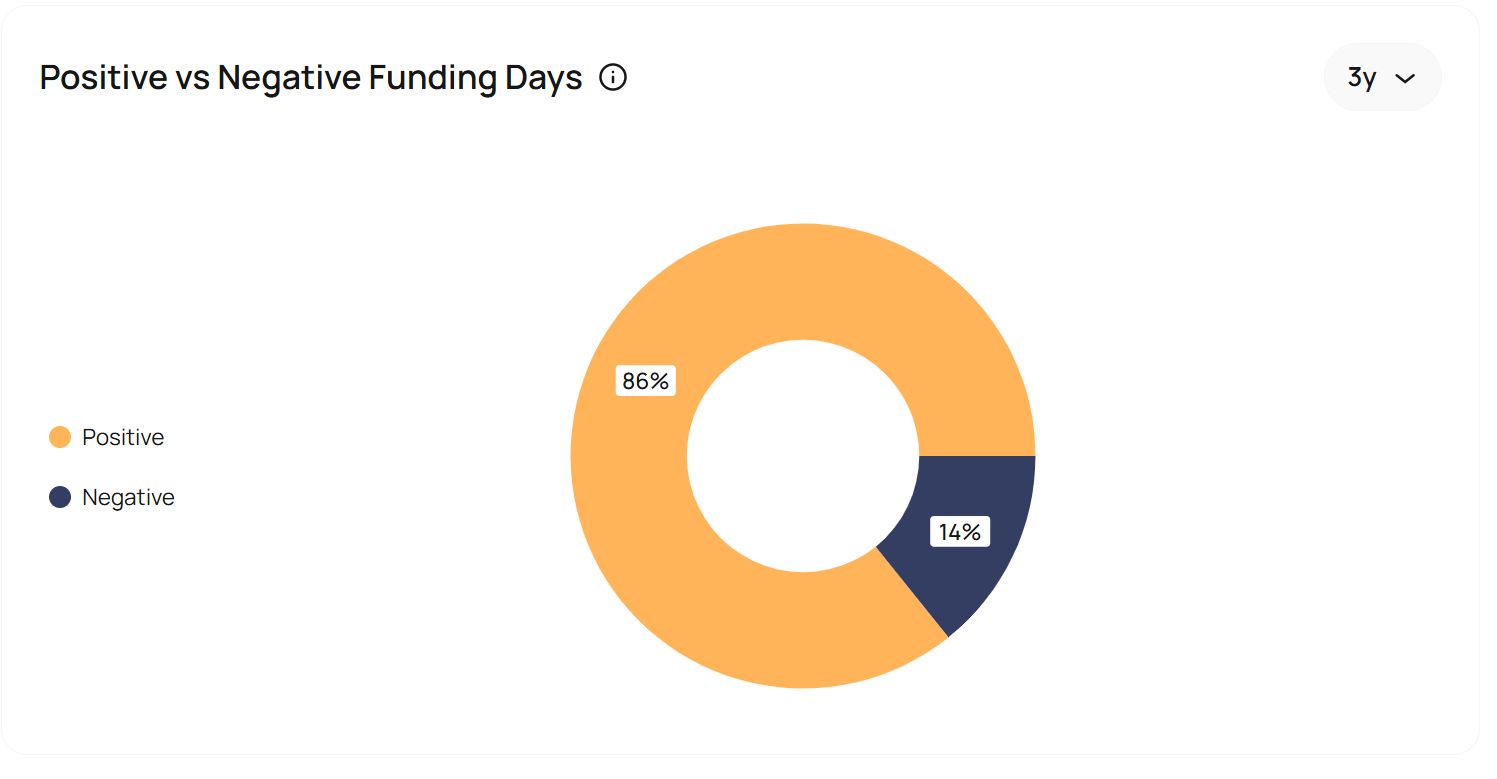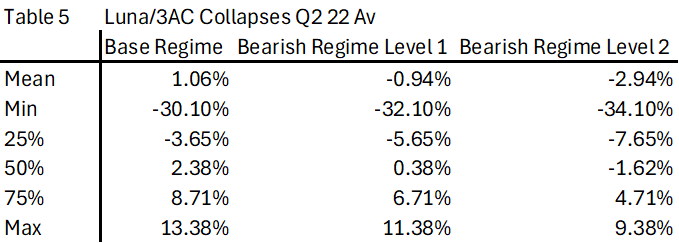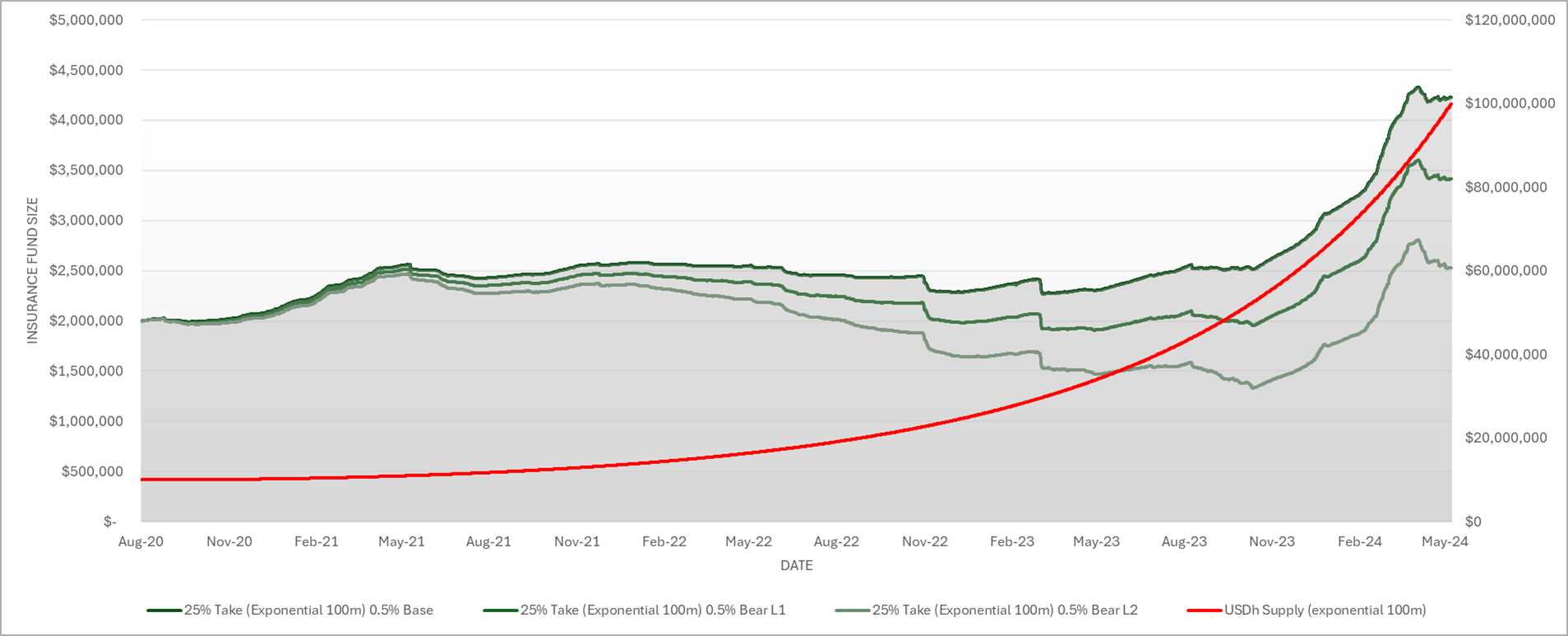- Hermetica
- Posts
- Resilience by Design: The Role of the USDh Reserve Fund
Resilience by Design: The Role of the USDh Reserve Fund

USDh is a Bitcoin-backed, yield-bearing stablecoin issued natively on Bitcoin L1s and L2s. USDh is delta-neutral; it is price-stable in dollar terms because every BTC backing USDh is matched with a short of equal size in perpetual futures.
This hedge removes volatility risk, but it doesn't generate yield on its own. To understand how USDh pays stakers and builds a reserve, we first need to understand where the yield comes from: the Funding Rate.
Funding Rates: The Engine Behind USDh Yield
At the core of USDh’s yield mechanism is the Bitcoin perpetual (perp) futures market, and specifically, the funding rate.
A perpetual futures contract is a type of derivative that enables traders to speculate on the price of Bitcoin without actually owning the asset. Compared to standard futures contracts, perps have no expiration date. To prevent their price from drifting too far from the spot market, exchanges use a mechanism called the funding rate.
The funding rate is a recurring payment exchanged between traders holding long and short positions. When perp contracts trade above the spot price (a common sign of bullish sentiment and long leverage), long traders pay shorts. When the perp trades below spot, shorts pay longs. This dynamic keeps the contract price in sync with Bitcoin’s actual market value.
USDh’s yield comes from consistently holding the short side of that trade. The protocol keeps USDh pegged to the dollar through a delta-neutral strategy, a combination of a long Bitcoin spot position with a short position on perp futures. This removes exposure to Bitcoin’s price and allows the system to earn yield solely from funding.
The perp market has historically been dominated by long positions, and funding rates are usually positive. This creates a structural yield opportunity for protocols like Hermetica that consistently hold short positions.
Our APY dashboard tracks funding rates. Over the past three years, funding has been positive on 940 days of 1,096 days, representing 86% of the period. In bull markets, funding can spike well into double-digits.

However, if funding turns negative, the hedge becomes a cost. If USDh supply continues to grow under these conditions, each new mint increases the short position and deepens the draw on capital. To account for this, we maintain a Reserve Fund.
The Reserve Fund accumulates a portion of yield during periods of positive funding rate and covers shortfalls if funding turns negative.
Modelling the Reserve: Assumptions and Results
When we designed USDh, we built a modelling framework to stress-test the Reserve Fund across thousands of simulated market conditions. In total, our quantitative analysts ran 27,216 simulations using funding data from Binance and Deribit from 2020 through early 2024, alongside synthetic scenarios that model extended negative funding rate environments.
These included two “bear regimes”: Bear L1, which reduced all funding rates by 2% annually, and Bear L2, which reduced them by 4%. The purpose of this modelling was to identify combinations that keep the reserve solvent even when conditions deteriorate for months at a time.
Each simulation varied three key parameters:
The Take Rate
The size of the Reserve Fund at launch (expressed as a % of USDh TVL)
The growth trajectory of USDh supply
The simulations revealed the Take Rate as the most influential variable for Reserve Fund longevity. Commission fees and growth curves mattered too, but to a lesser extent. Reserve Fund size helped, but only when paired with an appropriate Take Rate. The key was keeping enough capital flowing to users to incentivize adoption while routing enough to the Reserve Fund to build durability.
The optimal configuration for Reserve Fund stability is:
Take Rate: 25% Initial
Reserve Fund: 20% of
USDh TVL Growth trajectory: Exponential to $1B USDh
This combination remained solvent across all scenarios, including Bear L2, the most aggressive stress condition in the model. It also performed reliably under historical sequences like the 3AC collapse, Luna depeg, FTX bankruptcy, and the 2023 post-FTX drawdown.

Market Crisis Luna/3AC Collapses Q2 -Q3 22 Funding Rates
Growth curves had a significant impact on the Reserve Fund. Linear growth to $500M or $1B stressed the Reserve Fund too early under negative funding. Exponential growth, which starts slower, gave the Reserve Fund time to build before exposure scaled, making it far more resilient.

100m Exponential Growth 25% Take Rate
The system also adjusts naturally. When funding drops, staking rewards fall, which naturally reduces demand for USDh, slows new minting, and shrinks the hedge. The Reserve Fund draws down less, without any need for intervention.
In more severe, prolonged downturns, where BTC perp funding remains negative and the reserve fund approaches a critically low level (defined as 25 basis points of TVL), the protocol can temporarily shift USDh’s backing into stablecoins or earn yield from Treasury bills instead.
This fallback protects the system from further reserve drawdown during stressed conditions. It also allows the reserve to begin rebuilding through fixed-income yield, ensuring USDh can remain solvent and continue to operate even when market-based funding disappears.

USDh’s Backing Distribution
USDh’s current backing is approximately 97% BTC and 3% liquid stables. In extreme market conditions, this composition can temporarily shift. The system is designed to adjust backing to as much as 100% liquid stables to preserve solvency. This measure is only used when necessary, but it provides a critical backstop for long-term sustainability.
Why It Matters for USDh Users
The optimal configuration for our Reserve Fund keeps USDh solvent through extended stress periods.
The protocol’s Take Rate and the Reserve Fund structure were measured against thousands of simulations to ensure that USDh remains fully backed, even when funding turns against the system.
Our Reserve Fund design removes reliance on external intervention, governance switches, or short-term optimism.
This post summarizes a detailed internal modelling study that shaped USDh’s reserve and Take Rate design. The full report includes simulation data, assumptions, market regimes, and scenario outcomes. The full research paper is available here.